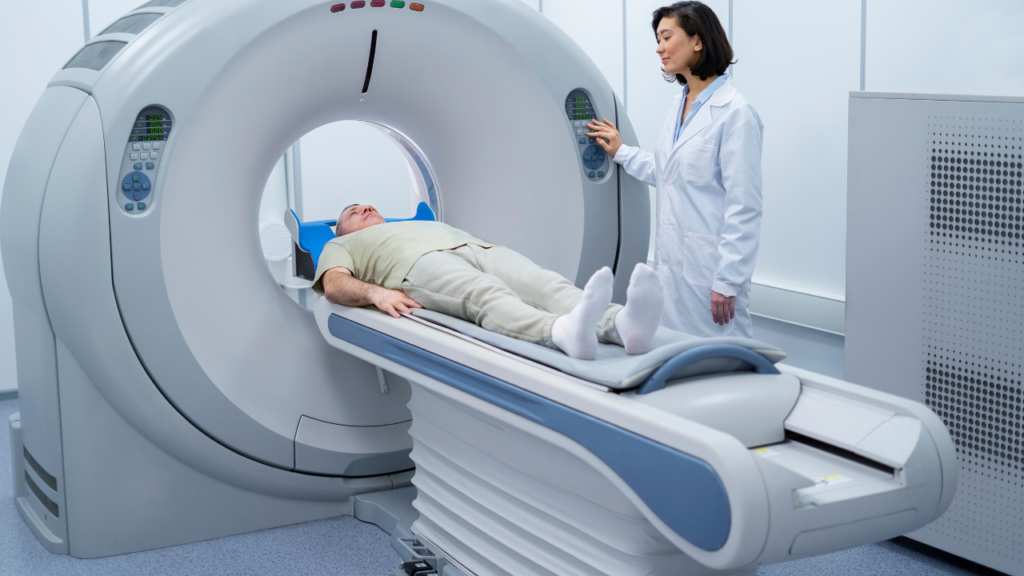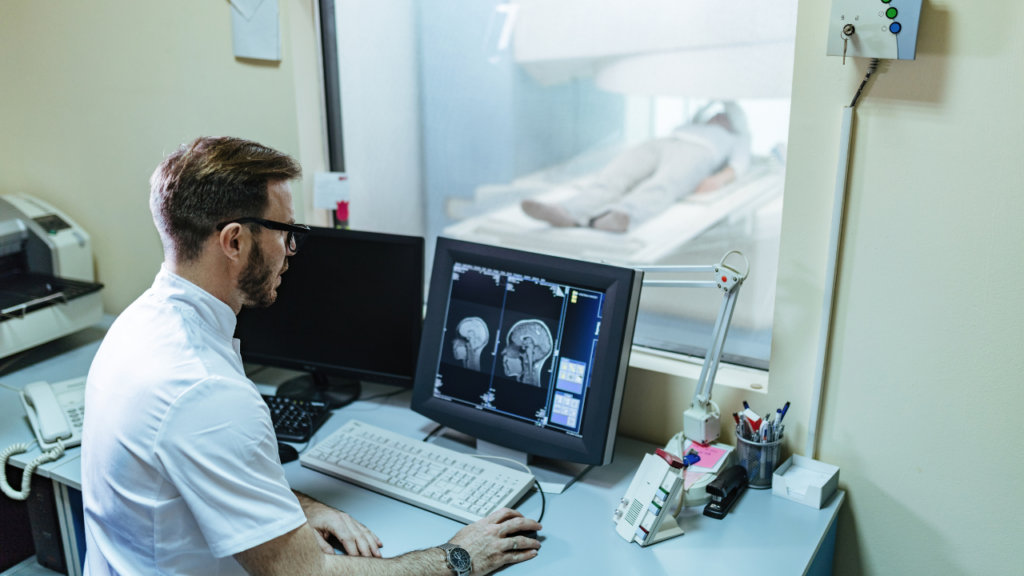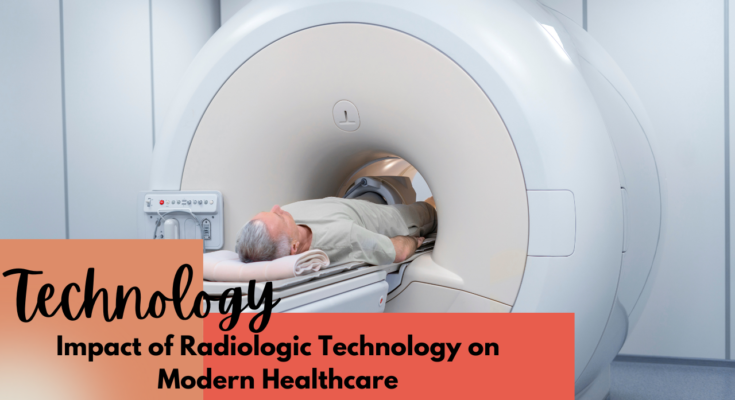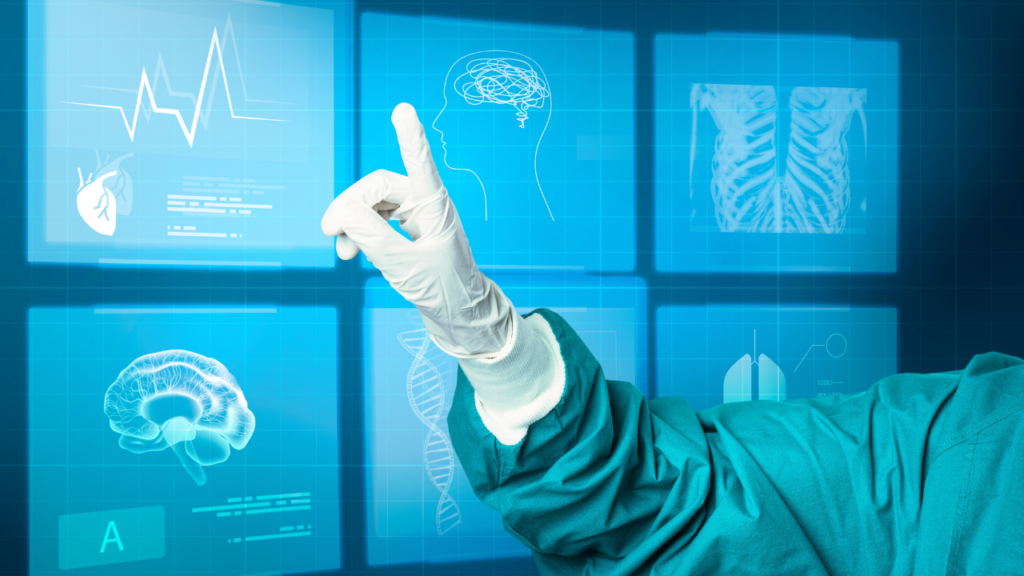Impact of Radiologic Technology on Modern Healthcare
Radiologic technology, commonly referred to as radiography or X-rays, uses radiation to produce images of the soft tissues, bones, organs, and veins in the human body. These images can be used to diagnose diseases, injuries, and abnormalities of the birth process. The findings are either captured on X-ray film or shown on a video monitor, and they aid in a thorough comprehension of a patient’s health.

Radiologic technology has had a revolutionary effect that has greatly improved modern healthcare’s capacity for diagnosis. This area of medicine has advanced significantly, transforming the way doctors identify and treat a wide variety of diseases. Innovations that continuously improve patient care have been made possible by the combination of contemporary technology and medical knowledge.
1. X-ray Technology:
An important advancement in Radiologic Technology, X-ray technology began with Wilhelm Conrad Roentgen’s discovery of X-rays in 1895. This momentous occasion let non-invasive imaging enter a new era by enabling medical professionals to view inside the human body and learn essential information about its internal systems. Rapid use of X-ray technology led to its development as an essential diagnostic tool for a variety of diseases, including lung ailments and fractures. Radiologic Technology rapid and accurate imaging capabilities have greatly accelerated the development of medical diagnosis and treatment planning, highlighting its critical significance in contemporary healthcare.
- Historical Significance: X-ray technology owes its existence to Roentgen’s groundbreaking discovery, which unveiled a previously unseen realm within the human body. The historical significance lies in the paradigm shift from invasive diagnostic methods to non-invasive imaging, fundamentally altering the landscape of medical diagnostics.
- Non-Invasive Imaging Advancements: X-ray technology has emerged as a primary modality for non-invasive imaging, enabling healthcare professionals to visualize internal structures without resorting to invasive procedures. This breakthrough has been particularly instrumental in diagnosing a spectrum of medical conditions, ranging from bone fractures to respiratory ailments.
- Diagnostic Precision: The ability of X-ray technology to swiftly produce high-resolution images has significantly elevated diagnostic precision. Medical professionals can now identify and assess conditions with unparalleled accuracy, facilitating prompt and targeted interventions.
- Standard Diagnostic Tool: Over the years, X-ray technology has evolved into a standard diagnostic tool across various medical specialties. Its widespread use underscores its reliability and efficiency in aiding healthcare providers in the identification and characterization of diverse medical issues.
- Treatment Planning: X-ray technology not only aids in accurate diagnoses but also plays a crucial role in treatment planning. The detailed imagery provided by X-rays guides healthcare professionals in formulating personalized treatment plans, optimizing therapeutic interventions for better patient outcomes.
- Advancements in Medical Practices: The integration of X-ray technology has ushered in advancements in medical practices, allowing for quicker, more accurate diagnoses and streamlined treatment approaches. This technology has become an integral component of the modern healthcare landscape, contributing to the continuous improvement of patient care.
2. Computed Tomography (CT) Scans:
3. Magnetic Resonance Imaging (MRI):
In the realm of medical imaging, Magnetic Resonance Imaging (MRI) emerged as a groundbreaking technology in the 1980s. This method harnesses the power of strong magnets and radio waves to create highly detailed images that unveil the intricacies of the body’s internal structures. What sets MRI apart is its non-reliance on ionizing radiation, making it a safer alternative for specific patient groups.

MRI proves particularly valuable in capturing images of delicate areas such as the brain, spinal cord, joints, and soft tissues. Its capability to provide detailed and comprehensive information has significantly advanced fields like neurology, orthopedics, and oncology. By offering a radiation-free imaging option, MRI has become an essential tool in the diagnostic arsenal, ensuring both accurate diagnoses and enhanced patient safety.
4. Positron Emission Tomography (PET) Scans:
An extremely small amount of radioactive material is injected into the body during a Positron Emission Tomography (PET) scan. The signals are subsequently picked up by sensitive cameras, which produce finely detailed pictures that show the body’s metabolic activity. This cutting-edge Radiologic Technology is widely used in the field of cancer, where it is essential for tumor diagnosis and surveillance. Radiologic Technology becomes an effective tool for determining the stage of cancer, organizing successful therapies, and gauging the response to interventions when paired with CT scans, a technique known as PET-CT. The combination of PET and CT scans improves the accuracy and breadth of data that medical practitioners may access, facilitating more precise diagnosis and individualized patient care.
5. Digital Radiography:
Digital radiography has become a ground-breaking substitute for traditional film-based X-rays in the field of medical imaging. By using digital sensors, it ushers in a new era of instantaneous image access, enhanced image quality, and less radiation exposure for patients. This change in Radiologic Technology has allowed for faster and more accurate assessments, which has greatly improved patient care efficiency while also streamlining the diagnostic process. The move from old methods to digital radiography marks a major milestone in healthcare, contributing to a more patient-centric and technologically sophisticated approach to diagnostic imaging.
6. Artificial Intelligence (AI) in Radiology:
Conclusion:
Since the discovery of X-rays, radiologic technology has advanced significantly, changing diagnostics and healthcare imaging. Diagnoses are now more precise and effective thanks to technological advancements including digital radiography, artificial intelligence, PET, MRI, and CT scans. The field of radiologic technology has a bright future ahead of it, full with opportunities for advancement and better patient care.
FAQ’s
Q1. What is a radiologic technologist?
A radiologic technologist (RT) is a healthcare professional who performs diagnostic imaging procedures and radiation therapy treatments.
Q2. Is a physician a radiologic technologist?
Medical professionals are not radiologic technicians. To perform their duties, they are not required to hold a degree in medicine (MD) or osteopathic medicine (DO). But radiation therapists (RTs) are highly trained to deliver radiation treatment or conduct diagnostic imaging examinations in a safe and appropriate manner. They collaborate closely with radiologists, medical professionals qualified to diagnose patients by reading and interpreting imaging studies. Diagnoses are not given by RTs.
Q3. What does a radiologic technologist do?
Radiologic technicians are adept in using radiation or imaging equipment. Many focus on a particular kind, such magnetic resonance imaging (MRI) or breast sonography. RTs engage in direct patient interaction. Depending on whether they work in radiation oncology or diagnostic imaging, their general job tasks change slightly.
Q4. Where do radiologic technologists work?
Most RTs are employed by hospitals. However, they can also work in outpatient care facilities, independent physician practices, nursing homes, and clinics. They could work in a specific diagnostic imaging room or, in an emergency department or operating room, for example, they might operate transportable X-ray or ultrasound equipment.


